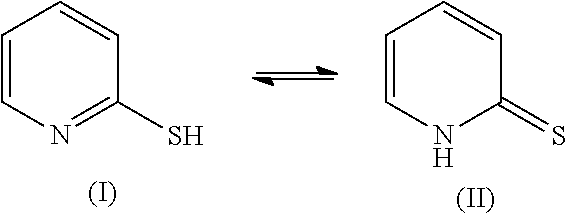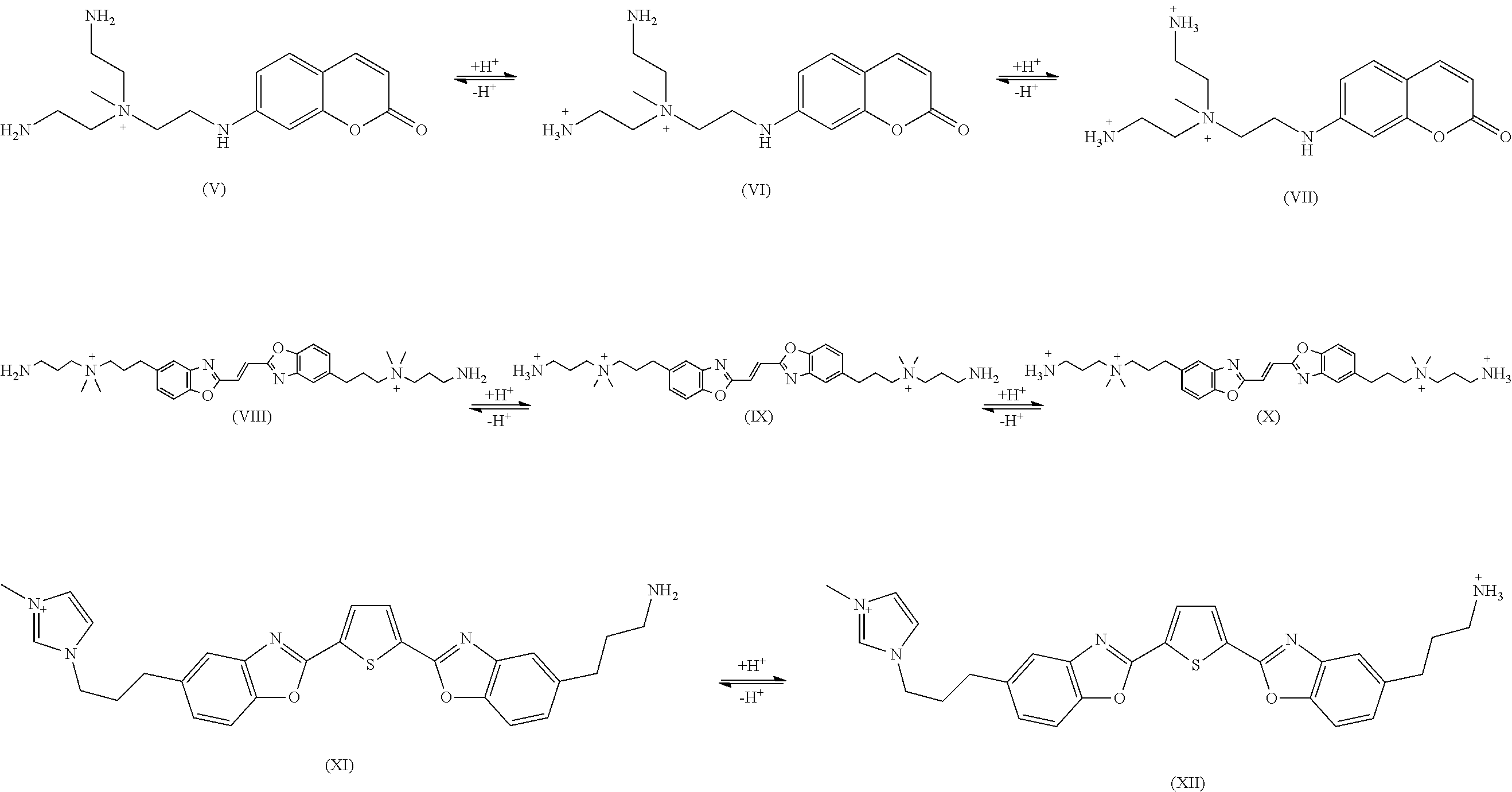Fluorescent Compounds for Treating Hair
a technology of fluorophores and hair, which is applied in the field of hair treatment with fluorescent compounds, can solve the problems of difficult intense effects, affecting the washfastness of hair, and affecting the appearance of keratinous fibers, and achieves the effect of improving washfastness
- Summary
- Abstract
- Description
- Claims
- Application Information
AI Technical Summary
Benefits of technology
Problems solved by technology
Method used
Image
Examples
example 1
[0109]In example 1, the permanent charge is part of the fluorophore and resides on the indolium moiety. The incipient cations are linked to the fluorophore via propylene groups.
[0110]Neat 2,3,3-trimethylindolenine (1.6 g) and 3-(Boc-amino)propyl bromide (2.4 g, 1.0 eq.) were mixed, magnetically stirred and heated to 100° C. for 3 hours. After cooling, triethoxymethane (0.74 g, 0.5 eq.) and pyridine (50 ml) were added to the reaction flask. The reaction mixture was refluxed for 3 hours, after which pyridine was evaporated in vacuo. The desired violet fluorescent compound was purified on preparative HPLC with C18 reverse phase column and water / methanol (with 0.1% TFA) as mobile phase. The final product (XXVIII) was obtained after Boc group was removed by ethanolic HCl followed by evaporation.
[0111]1H NMR: (600.1 MHz, DMSO-d6) 5=1.73 (12H, s), 2.02-2.07 (4H, m), 2.94-2.97 (4H, m), 4.21 (4H, br t), 6.50 (2H, d, J=13.6 Hz), 7.33-7.36 (2H, m), 7.47-7.50 (2H, m), 7.53 (2H, d, J=8.0 Hz), 7....
example 2
[0112]In example 2, the permanent charge is part of the fluorophore that resides on the pyridinium moiety. The incipient cations are linked to the fluorophore via propylene groups.
[0113]Nicotinaldehyde (1.07 g) was mixed with 2-hydrazinylbenzo[d]thiazole (1.0 eq., 1.65 g) in DMSO (15 mL) and stirred magnetically overnight. The resulting pale yellow slurry was dumped into ice-water and then filtered. The yellow cake collected from filtration is the desired intermediate. A portion of the intermediate, (Z)-2-(((E)-pyridin-3-ylmethylene)hydrazono)-2,3-dihydrobenzo[d]thiazole (0.5 g), was dissolved in DMF (15 mL) and reacted with 3-((t-butoxycarbonyl)amino)propyl bromide (2.1 eq.) and sodium bicarbonate (1.5 eq.). The reaction mixture was heated to 80° C. and magnetically stirred overnight. After the bisalkylation was complete, the Boc protection group was removed by adding concentrated aqueous HCl solution to the crude reaction mixture. DMF and water was then removed under vacuum. The r...
PUM
| Property | Measurement | Unit |
|---|---|---|
| Molar mass | aaaaa | aaaaa |
| Percent by mass | aaaaa | aaaaa |
| Percent by mass | aaaaa | aaaaa |
Abstract
Description
Claims
Application Information
 Login to View More
Login to View More - R&D
- Intellectual Property
- Life Sciences
- Materials
- Tech Scout
- Unparalleled Data Quality
- Higher Quality Content
- 60% Fewer Hallucinations
Browse by: Latest US Patents, China's latest patents, Technical Efficacy Thesaurus, Application Domain, Technology Topic, Popular Technical Reports.
© 2025 PatSnap. All rights reserved.Legal|Privacy policy|Modern Slavery Act Transparency Statement|Sitemap|About US| Contact US: help@patsnap.com



